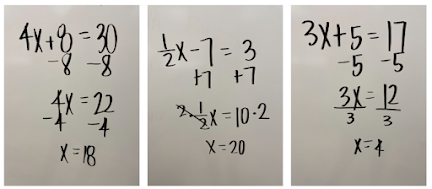2. I am one of 6 children.
3. I am not a huge fan of horses.
Two of the statements above are true and one is a lie... can you guess which one?
I think we have all been somewhere and used this strategy as an ice breaker or get to know you game. When talking about myself I actually dread this activity because I never know what to say. My lies are usually way too outlandish, and I don't have many deceptive truths about myself. If you guessed #2, you are correct. I am one of 4 children. Horses are not my jam. And my father was stationed on Kodiak Island for a few years when he was a pilot in the Coast Guard.
As much as I don't love this game outside of the classroom, I LOVE it in the classroom with students. It's a fantastic protocol for so many different content areas. Here's two ideas!
Language Arts Example:
Have students read a piece of text. From the text, have students write two true statements and one false statement. Share whole group or switch papers between small groups and have students figure out which statement is the lie. I love this as a way for students to engage with the same piece of text multiple times. Each new set of three statements creates a new purpose for reading. Students continually have to reference the text to check or dispute a statement.
Here’s an example of my three statements from this text:
Math Example:
Give each group 3 problems to solve and tell them to solve 2 correctly and 1 incorrectly on purpose. They definitely need to show all their work during this activity! Share whole group or switch papers between small groups and identify which one is solved incorrectly. I love this as a way to reinforce the process of showing work and creating conversations around common misconceptions and errors!
As an exit ticket, you could give an example set you create and have students independently identify which one is solved incorrectly and why and justify their reasoning. This is a great way to hit on the math practice standard “critique the reasoning of others”. Here is an example of how this could look.
Which one is solved incorrectly?



No comments:
Post a Comment